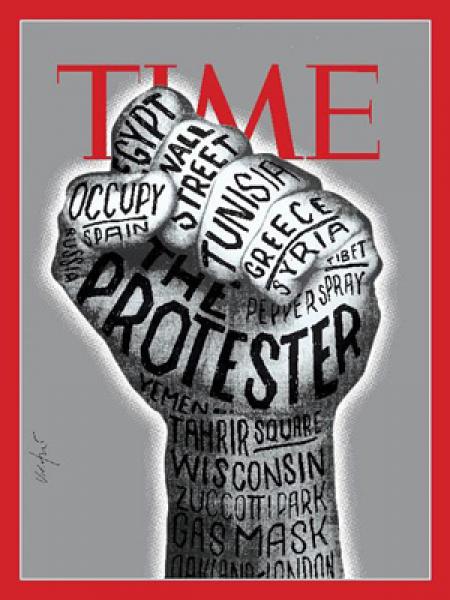Serendip is an independent site partnering with faculty at multiple colleges and universities around the world. Happy exploring!
Genres

Read between the Icons
Image above: Persepolis, capital of the Arachaemenid kings of Persia, now located in the province of Fars in southwestern Iran.
I have come to realize that I enjoy reading comics. I am more of a visual person and tend to be a slow reader, but what I found to be most intriguing about reading comics is the suspense in the gutter: the space in between the frames that calls for your boundless imagination to be filled. As Scott McCloud describes it in Understanding Comics, “human imagination takes two separate images and transforms them into a single idea” (66). The gutter allows for an imaginative, individualized experience as one sways their eyes from one frame to the next, connecting the trails of an unfinished story in their own mind.


So what have I learned thus far?
I have never heard of the digital humanities before the Literary Kinds course and I soon discovered the transformative nature of digital writing and its evolution across media. I have taken for granted the opportunities for self-learning from the infinite sources of information that are available through the Internet. The Digital Humanities Manifesto was empowering as it pushed me to take advantage of the open-source culture that is available in this time and age and to get my hands dirty as I partake in the “democratization of culture and scholarship”. For my first web paper, I explored science writing by examining how it transforms across platforms: from laboratory journal to popular science magazine to headline news. I looked into several pieces of writing in each stage but did not seek to examine the interface between the audience/readers and the scientists. I remained at the surface. It is a gift economy, where knowledge is readily accessible to all of us at no cost, but I had to make the connections inside the network in order to extract the most out of it. I had to give back, provide my perspective to hear the echo of others. In examining the Ten Principles for the Future of Learning Institutions in this digital age presented by Davidson and Goldberg, it was clear that I have not yet reached out “horizontally”. I did not consider approaching neither peers nor bloggers who explored the topic to better understand the changes in science writing.

Time-delayed reflections on Tues Jan 31 class
I unfortunately was not able to make it to last Tuesday’s rich discussion but would like to share my thoughts on Cassie Kosarek’s work. I thought that she created an interesting space on her “English thesis wanderings” blog where she presents her thesis preparation and which will culminate into her final thesis. It seems as if the burden behind thesis work and preparation is slightly lightened by the blog; it seems to be a more enjoyable journey into her final thesis presentation. Not all blog posts are cut from the English-thesis-proposal expectations or so I believe, but Cassie’s one post “So, Margaret Price and Judith Butler Walk into a Bar”, which is a virtual dialogue between the two theorists, was an original way to have her thesis work become a creative experiment.
I thought that this interestingly tied to what Kathleen Fitzpatrick describes to be the “remix” culture that is created from digital networks. Scholarly remixing allow for works to come together and form new interrelationships.
“Today, in the current system of print-based scholarship, this work takes the form of reviews, essays, articles, editions; tomorrow, as new mechanisms allow, these texts might be multimodal remixes, mashing up theories and texts to produce compelling new ideas.”-Kathleen Fitzpatrick, Planned Obsolescence, from originality to remix
Are we really reading?
With academic writing morphing into a genre on the web, we mostly read assigned texts from our computer. I decided to use reading the course assignments online as part of an experiment to test my ability to concentrate. Turns out I prefer to read the course material from a piece of paper instead of a computer screen because I grasp the material quicker and gain a better understanding. As previously mentioned in class, reading from our computers often leads to going in and out of multiple websites which means we are not able to give our assigned readings the undivided attention they deserve. I ask myself: Are we program to give text on a piece of paper more authority, esteem and attention? If so, we must acknowledge that the online publication of academic writing is gaining appraisal from the scholarly community and that we must modify how we perceive reading in this medium.
It is all a matter of time for me (as the writer), for you (whoever is reading this right now), for us (as a class)…

Mass Protests and Crowd Intelligence
In the Digital Humanities Manifesto 2.0, the word “manifesto” from manus or hand helped me relate the mass 2011 protests, such as those in the Arab Spring and Occupy, to the digital humanities. As fists reaching out for freedom and equality against corruption and unemployment in a mass protest, a similar hand reaches out for the freedom of the spoken word and the common share of ideas in the digital humanities. In a protest, a hand is not to be distinguished from the others around it as each one joins the others in a wave of fists for a common cause. Similarly, one person’s words and ideas in the digital platform matter, but how they connect to others' and their derived linkages create the multimedia network of “innovative thinking” that makes up the digital humanities. The emphasis of the ant colony instead of the Ivory Tower in the digital humanities reminded me of a book on complexity science (more about it here) that demonstrates the intelligence of crowds and how ant colony and swarm behavior can be used to determine the logic behind networks.

Scientific Journal Writing
At this point in time, I would consider scientific journal articles to be the main writing of my discipline. In class, I brought an article that I had written last semester in which I reported results of a five week long experiment. Whenever I write a scientific journal article, there is a very strict format that I am required to follow. The introduction provides the reader with the general background information about the experiment at hand. This includes, but it not limited to, the theory behind the science, the impact of the results of the experiment, previous experimental results, how the experiment described in the paper is new and innovative, and the history and uses of the materials in the experiment. The section that follows, the results and discussion, should flow like a story and does not have to be in chronological order. This section presents the results of the experiment so that the reader will understand how the experimenter arrived at a conclusion. Following the results is a very brief experimental section and an even shorter conclusion. The conclusion is meant to be one paragraph that restates the results of the experiment and the final conclusion about the experiment.

Class Notes: 10/19/10
Notes 10/19/10
Anne: course-keeping, went over written course evaluations, read comments about our discussions might turn into arguments, class evaluations, what we are doing from here on out. Go over material that we will be covering, reading, watching. Decide amongst ourselves which books we will be reading because our first list was too extensive, too much material. Paper due soon!!! Can write about any material/conversation covered thus far.
On to etymologies…
Aya Seaver: wants to read the dictionary. On a spectrum, very easy to back it into the corner of nonfiction, look at the politics because it is more complicated


